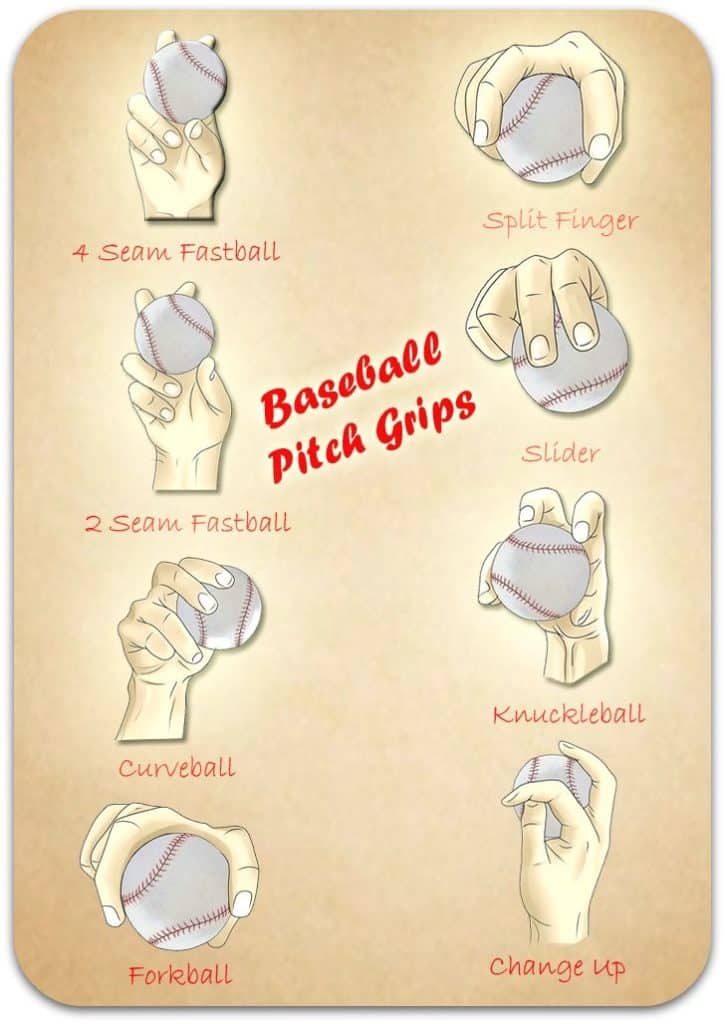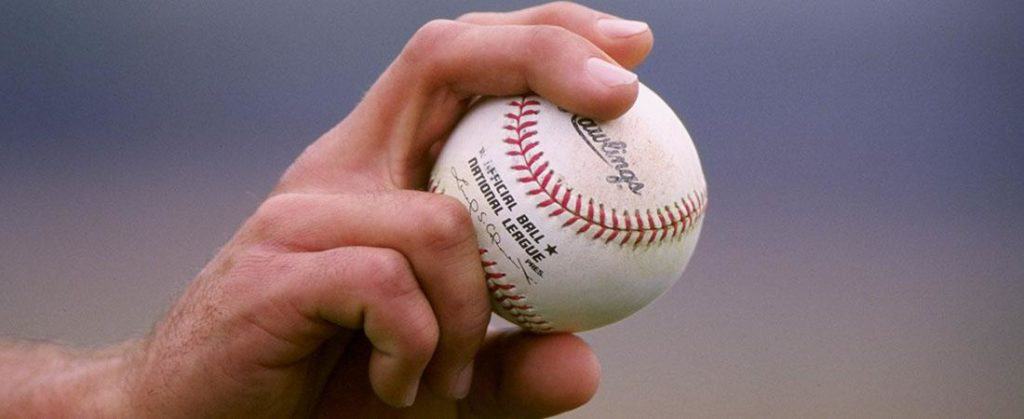A great starting pitcher can throw anywhere from four to five pitches anywhere in the zone for strikes.
One might be his designated strikeout pitch that he goes for early in the count when he’s got the batter in a hole. A great pitcher might only utilize one pitch, like Hall of Famer Mariano Rivera used his cutter, but they can certainly expand into having two or even three pitches that they feel confident in.

While watching the game you may be wondering what the pitcher is throwing and maybe even just how they are doing so. Below we will be discussing several of the most common types of pitches that you will see in a baseball game.
Fastballs

Some may be flat and hard while others can move toward or away from the batter, but they all share one thing in common, they are all thrown hard.
The Four-Seam Fastball
The four-seam fastball is the one we all know how to throw just by picking up the ball, grabbing it as a position player would, and slinging it over home plate.
Just about every pitcher will and does throw this pitch. Depending on the pitcher, this pitch can register above 100 miles per hour!
The Two-Seam Fastball
A two-seam fastball is a pitch with left-to-right or vice versa movement. Pitchers typically throw the pitch better in one direction than the other.
To throw this pitch, the pitcher locates the place on the ball where the seams a closest and place your index and middle finger together in between the seams.
Then press firmly against the ball with one of the fingers. This will guide the break of the ball.
The Cutter
The cutter, or cut fastball is more difficult to throw than a standard two-seam fastball, but it is well worth it for those who can master it.
A cutter moves from the middle or heart of the plate and comes right in on the batter near the hands.
This pitch is throw in the high 80’s to mid ’90s on the Major League level and will result in plenty of broken bats.
Off-Speed Pitches
Take a little something off the ball and you’ll end up with more rotation and move movement in your pitches.
When you sacrifice speed, you gain movement and that’s how off-speed pitches get the job done. These are typically thrown to fool the batter.
The Curveball
The Curveball is the most popular breaking ball or off-speed pitch.
There are two different types of curveballs: the traditional 12-6 overhand curveball, and the big, sweeping curveball that cuts down and away from the throwing arm.
Both of these curveballs are thrown with your index and middle finger along the seam of the baseball. When releasing the pitch, you snap your wrist straight down to create the breaking motion.
The Slider
The slider is a popular “put away” pitch because of the sharp break that occurs during the pitch.
A slider is held in a similar fashion to the curveball, with your same fingers along the seam. The difference in the two pitches is that when the pitcher releases an attempted slider, instead of snapping your wrist down you snap it across.
This creates a rotation on the ball that moves sharply down and across the body of the pitcher.
The Changeup
The changeup is the second most common breaking ball or off-speed pitch. A changeup comes out of the pitcher’s hand identically to a fastball, but is much slower and has a small amount of movement down in the strike zone.
On the major league level, the difference between a fastball and a changeup from the same pitcher can be as large as ten to 15 miles per hour.
To throw a changeup, a pitcher places three fingers at the very top of the ball. The index, middle, and ring fingers with the index and ring fingers along the seams and the middle finger in between them, and then the pitch is thrown with a similar release as a fastball.
The Circle Changeup
The circle changeup is a more difficult version of a changeup to throw but has increased movement. To throw a circle changeup, the pitcher must create the “ok” sign with their throwing hand, and then place the ball across his middle, ring, and pinky fingers.
Those three fingers are placed in the same way the changeup is thrown. The circle changeup will roll off the three smaller fingers and create more rotation and less speed naturally, with movement down and in to a right-handed batter.